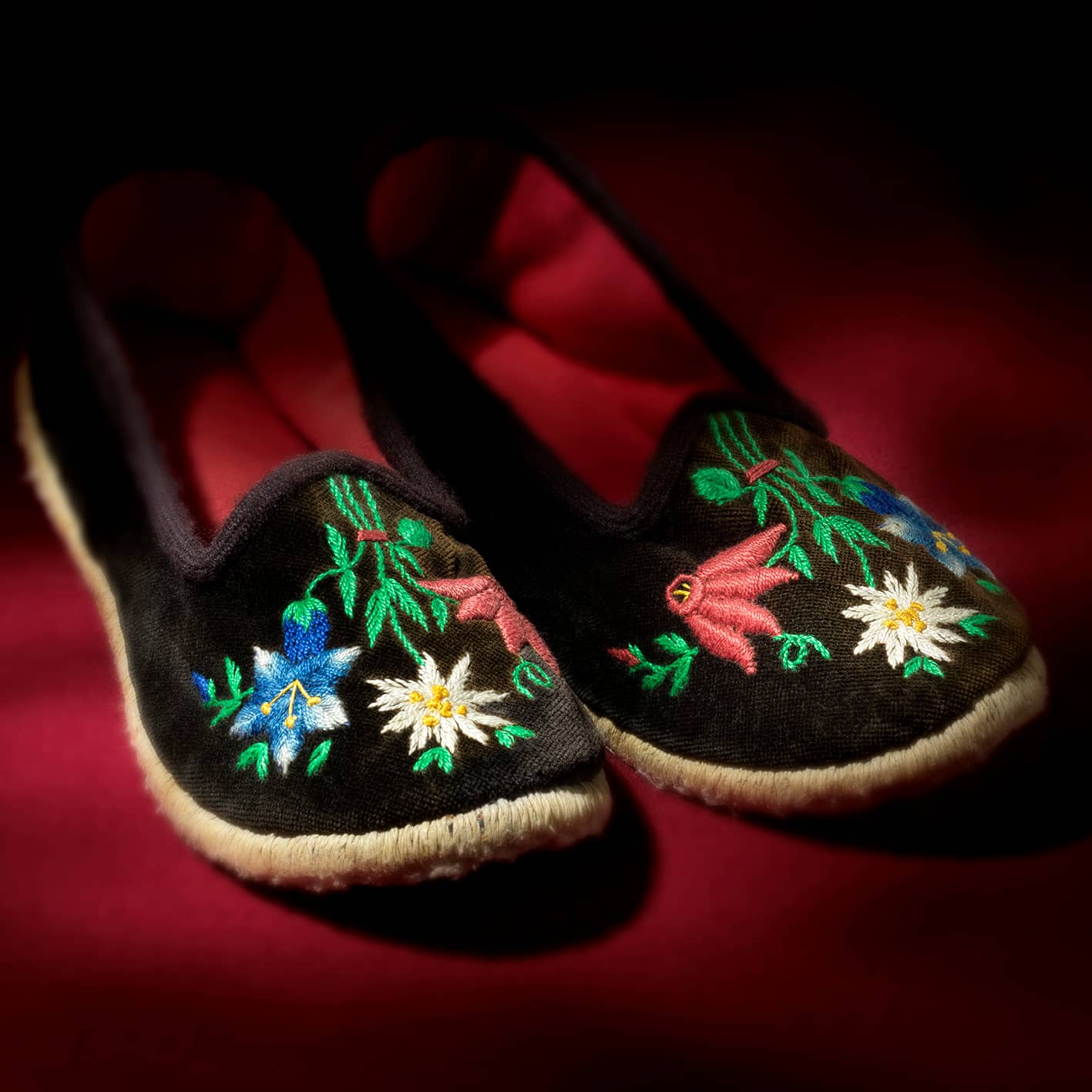Proposed by:
Marco Bozzola (Associate Professor)
Elena Dellapiana (Team Leader, Full Professor)
Claudio Germak (Full Professor)




Name
Scarpetti, i scarpets de Cjargne
Tipology
Footwear
Authorship
Unknown
Date or period:
Unknown
Materials:
Cotton velvet, waste or recycled fabrics in natural fibres, hemp yarn, cotton thread
Techniques:
Hand sewing
Country/ region:
Carnia, Friuli Venezia Giulia, Italy
Related links:
“Scarpets” are the traditional handmade footwear of Carnia, a mountainous region in Friuli Venezia Giulia. Mainly crafted by women during winter evenings, they were made for the whole family using recycled fabrics. Though known as humble footwear, they were also worn by wealthier classes, especially at home or for special occasions.
While uniform in construction, scarpets varied in materials and decorations—cloth or velvet, simple or embroidered—reflecting social status, community identity, or individual creativity. Their history is documented in Friulian literature, inheritance and dowry records, paintings, and sumptuary laws, with references dating back to 16th-century texts mentioning “black cloth shoes.”
This artisanal tradition, passed from mother to daughter, was at risk of disappearing. To preserve its legacy and promote its future, the Carnic Museum of Popular Arts Michele Gortani, one of the most important ethnographic museums in the Alpine region, launched the “Scarpetti, i scarpets de Cjargne” project. This initiative includes training courses for traditional craftsmanship and a certification mark for artisans maintaining authentic techniques.
“Scarpets” are the symbol of the toil, ingenuity, creativity and commitment of skilled hands that know how to create beauty that is sustainable, useful and long-lasting.
Detail of floral embroidery on velvet upper, women’s ‘Scarpets’, from Villa Santina – Carnia, kept at the Museo Carnico, photo Massimo Gardone / Azimut.
Hand-sewn ‘Scarpetti’ insoles, made from several layers of recycled fabrics, handmade by Elisa Mainardis, an artisan graduated from the ‘Scarpetti, i scarpets de Cjargne’ project training course and licensee of the ‘Scarpetti’ certification mark.
The craftsmanship of the ‘Scarpetti’, hand-stitched soles and uppers ready to be assembled, handmade by Elisa Mainardis, a craftswoman graduated from the ‘Scarpetti, i scarpets de Cjargne’ project training course and licensee of the ‘Scarpetti’ certification mark.
Umberto Antonelli, “The Boyfriend’s Shoes”, Friuli Landscapes and Costumes Fund, Photo Library of the Civic Museums of Udine.
Scarpets: tools and materials preserved at the Museo Carnico Gortani.